HEALTH NEWS & UPDATES
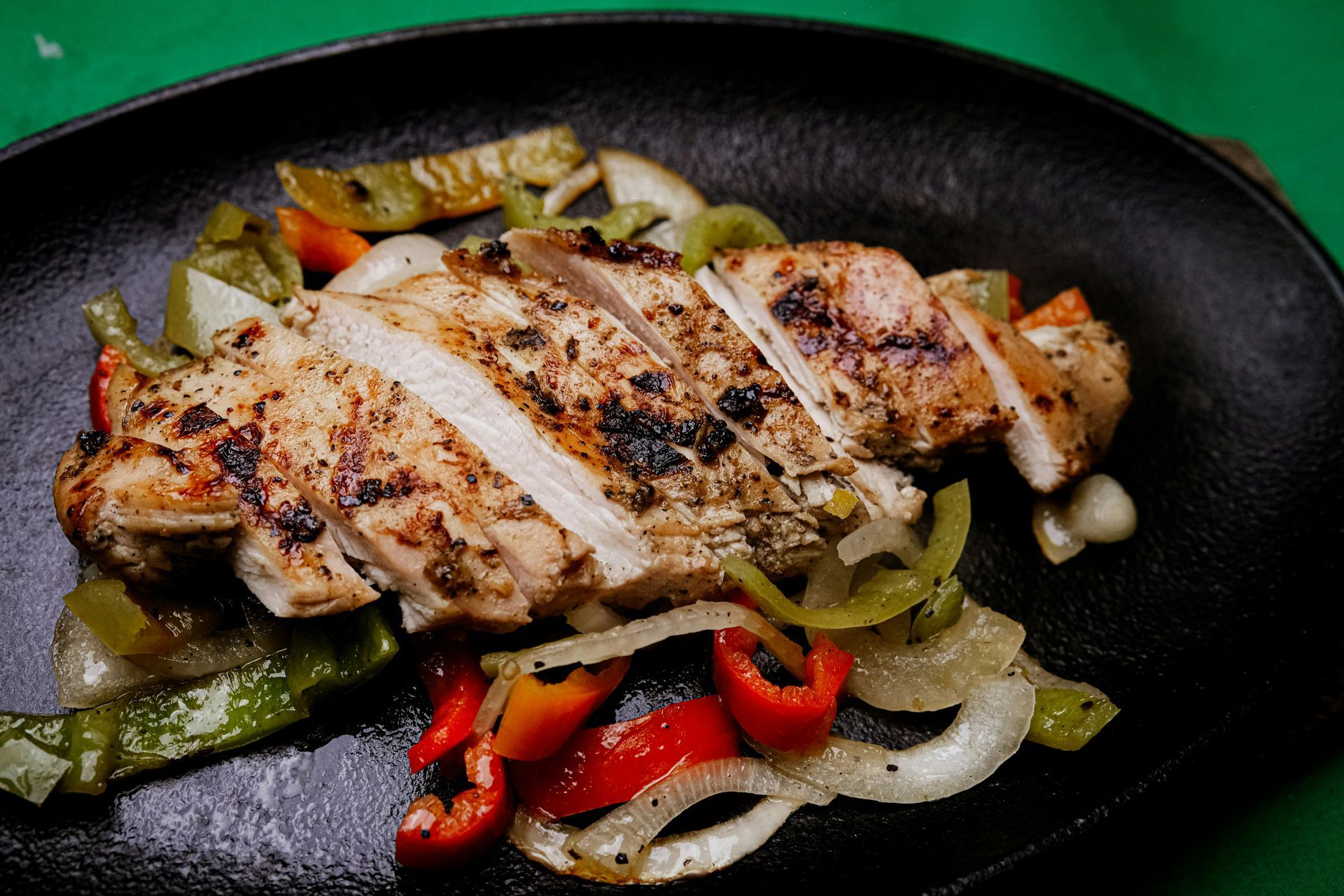
When you’re starting your fitness journey, you’ll hear a lot about protein and for good reason. Protein is essential for building and repairing muscle, keeping you fuller for longer, supporting healthy hair, skin, and nails, and even balancing hormones. But how much do you actually need each day? Why Protein Matters for Women Protein isn’t just for athletes or bodybuilders it’s a cornerstone of health for every woman. It plays a role in nearly every process in the body, and getting enough can transform how you feel, look, and perform. Key benefits of protein for women: Builds and preserves lean muscle – crucial for metabolism, strength, and shape. Boosts metabolism – muscle burns more calories at rest, helping with fat loss. Keeps you fuller for longer – reduces cravings and helps with portion control. Supports hormone balance – steady blood sugar and hormone production. Aids recovery and repair – faster bounce-back after workouts, illness, or injury. Strengthens hair, skin, and nails – protein is the building block of collagen and keratin. Supports bone health – works with resistance training to maintain strong bones. Boosts immune function – protein is key for producing antibodies and immune cells. How Much Protein Should You Eat? A good starting point for most active women is: 0.7–1.0 grams of protein per pound of goal body weight per day. For example: If your goal weight is 140 lbs, aim for 98–140g of protein daily. If your goal weight is 160 lbs, aim for 112–160g daily. Your exact needs will depend on your activity level, goals, and current body composition, but this range works well for most women starting out. The Benefits of Pairing Protein With Exercise Protein and exercise are a powerhouse combination. When you pair proper protein intake with strength training or regular workouts, the benefits multiply: Faster muscle growth & definition – you give your muscles the building blocks they need and the stimulus to grow. Better fat loss while keeping muscle – prevents the “skinny fat” look. Improved strength & performance more muscle means lifting heavier, running faster, and moving better in daily life. Faster recovery – less soreness and more energy for your next workout. Greater long-term results – builds a healthy, toned body that lasts, not just quick fixes. How to Spread Protein Throughout Your Day Your body uses protein more effectively when it’s spread across meals, not all eaten at once. Aim for 20–35g per meal, plus protein-rich snacks. Example: Breakfast: Greek yogurt with berries (25g) Snack: Protein shake (25g) Lunch: Chicken salad (30g) Snack: Cottage cheese with fruit (20g) Dinner: Salmon with veggies (30g) Easy High-Protein Foods for Beginners Chicken breast, turkey, lean beef Salmon, tuna, shrimp Eggs & egg whites Greek yogurt (plain, unsweetened) Cottage cheese Protein powder (whey, plant-based, or collagen blends) Lentils, chickpeas, black beans (also contain carbs) Tips for Hitting Your Protein Goal Start each meal with protein first — build the rest around it. Prep protein in bulk so it’s ready to grab. Use snacks to boost intake if you’re falling short. Track your food for a week to see where you’re at. Bottom Line: Protein is one of the most important nutrients for women starting a fitness journey. When combined with regular exercise, it’s a game-changer for your body composition, energy, and overall health. Hitting your daily protein goal supports better workouts, improved recovery, and lasting results — and it’s simpler than you think once you build the habit. 💬 Want help figuring out your exact protein needs and pairing them with the right workouts? Click the link & let’s get you started. https://www.breakthecore.com/
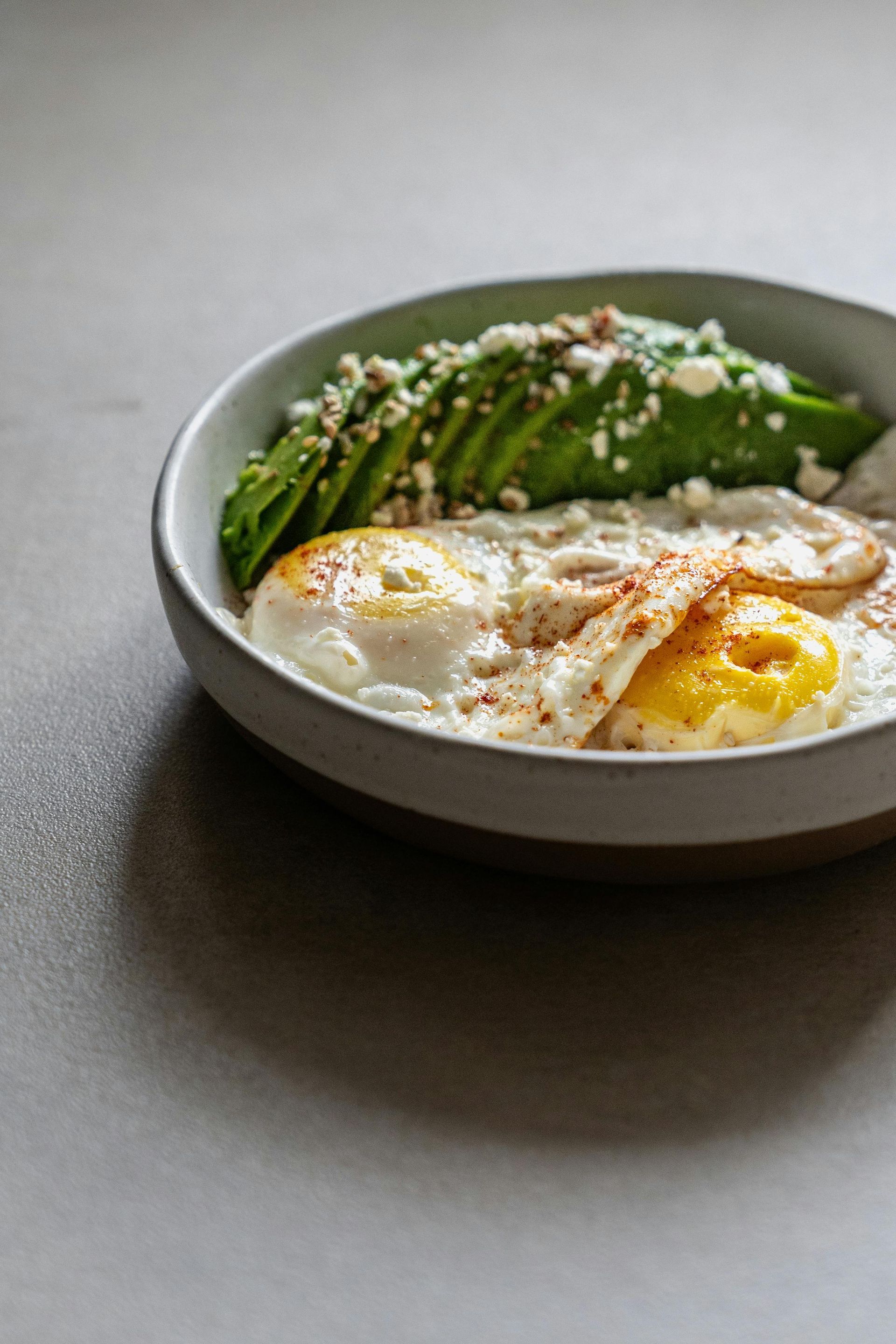
Whole Foods Grocery List + 5-Day Clean Meal Plan Grocery List PROTEINS: - Chicken breast (3-4 lbs) - Ground turkey or lean beef (2 lbs) - Eggs (2 dozen) - Salmon or cod filets (2 lbs) - Turkey or chicken sausage (nitrate-free) VEGGIES (fresh or frozen): - Broccoli - Green beans - Bell peppers - Zucchini - Sweet potatoes - Mixed greens or spinach - Carrots - Onion - Garlic CARBS: - Jasmine or brown rice - Quinoa - Sweet potatoes - Whole grain or chickpea pasta - Corn tortillas or rice cakes HEALTHY FATS: - Avocados - Olive oil - Nuts or seeds (almonds, chia, sunflower) - Nut butter (no sugar added) PANTRY STAPLES: - Low-sodium broth or stock - Canned beans (black or chickpeas) - Salsa - Coconut aminos or low-sodium soy sauce - Garlic powder, onion powder, paprika, chili powder, salt, pepper 5-Day Meal Plan MONDAY Lunch: Grilled chicken + sweet potatoes + roasted green beans Dinner: Turkey taco bowls (ground turkey, rice, sautéed peppers/onions, salsa, avocado) TUESDAY Lunch: Salmon + quinoa + steamed broccoli Dinner: Stir-fry with chicken, mixed veggies, and coconut aminos over rice WEDNESDAY Lunch: Turkey sausage + roasted sweet potatoes + spinach salad with olive oil Dinner: Ground beef zucchini skillet with garlic, onions & tomato THURSDAY Lunch: Tuna or egg salad lettuce wraps + rice cakes + side carrots Dinner: Baked chicken thighs + green beans + mashed sweet potatoes FRIDAY Lunch: Leftover stir-fry or grilled chicken salad Dinner: Sheet pan dinner: salmon or cod + roasted broccoli + carrots + sweet potatoes Prep Tips TIPS FOR EASY PREP: - Cook all proteins on Sunday or in a slow cooker while multitasking - Roast a big tray of veggies to mix and match - Use leftover dinner as lunch the next day - Pre-cook rice/quinoa for the week and portion it out
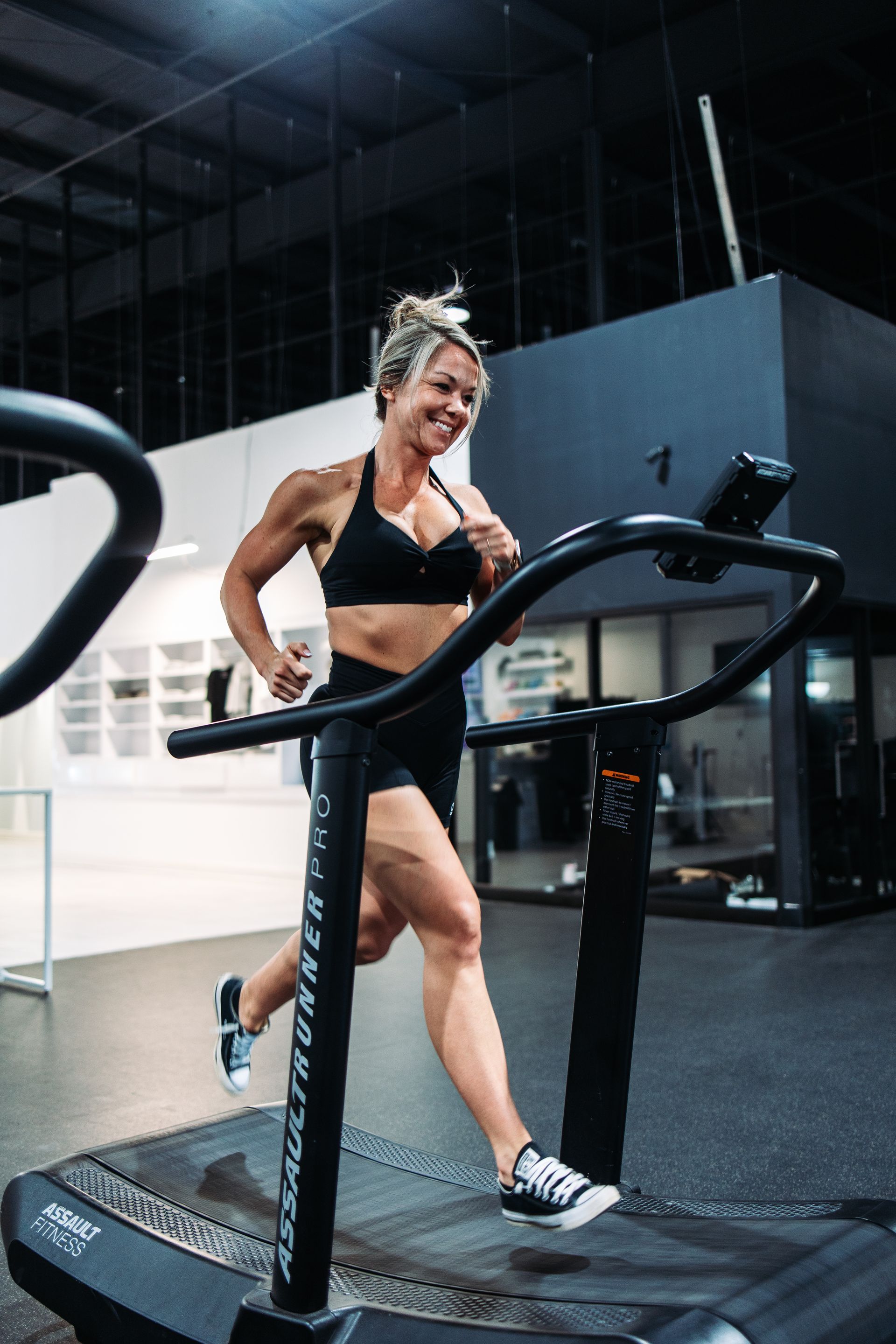
Let's get real: most women don't fail because they're lazy or unmotivated. They fail because their plan never fit their lifestyle in the first place. That's why every 1:1 coaching plan I build is customized, sustainable, and built around your reality - not some unrealistic cookie-cutter plan. Here's exactly how I structure things when we work together: 1. Deep Dive Intake: Your Story, Your Struggles, Your Strengths Your current routine, goals, and limitations Your relationship with food, fitness, and your body What's worked (or failed) in the past Where you need support most - physically, emotionally, mentally 2. Custom Nutrition Guidance (No Starvation Here) Your personalized macro targets (based on your goals) A simple, flexible eating framework using mostly whole foods Support for intermittent fasting (if it aligns with your routine) Easy meal prep ideas that don't require hours in the kitchen 3. Training That Matches Your Energy & Time A structured weekly workout plan tailored to your level, goals, and schedule Focus on progressive overload (so you keep seeing results) At-home or gym options (bands, dumbbells, or full gym -- we adapt) Strength + cardio built to fit YOUR body, YOUR goals 4. Mindset + Accountability = Real Change Weekly mindset prompts to stay connected to your "why" Coaching through setbacks (because they're normal) Messaging access for quick wins, questions, and support Encouragement to keep promises to yourself - that's where confidence grows 5. Clarity, Structure, Simplicity Workouts Macro tracker support Recipes Weekly focus & reflection Final Thought My job isn't to tell you to be perfect. It's to help you become the version of yourself who shows up consistently, eats like she loves herself, moves her body with power, and leads her life on purpose. If you're ready to ditch the chaos, ditch the guessing, and finally follow a plan that fits - my 1:1 coaching is where it all starts. Apply here or DM me 'READY' and let's build your plan together.
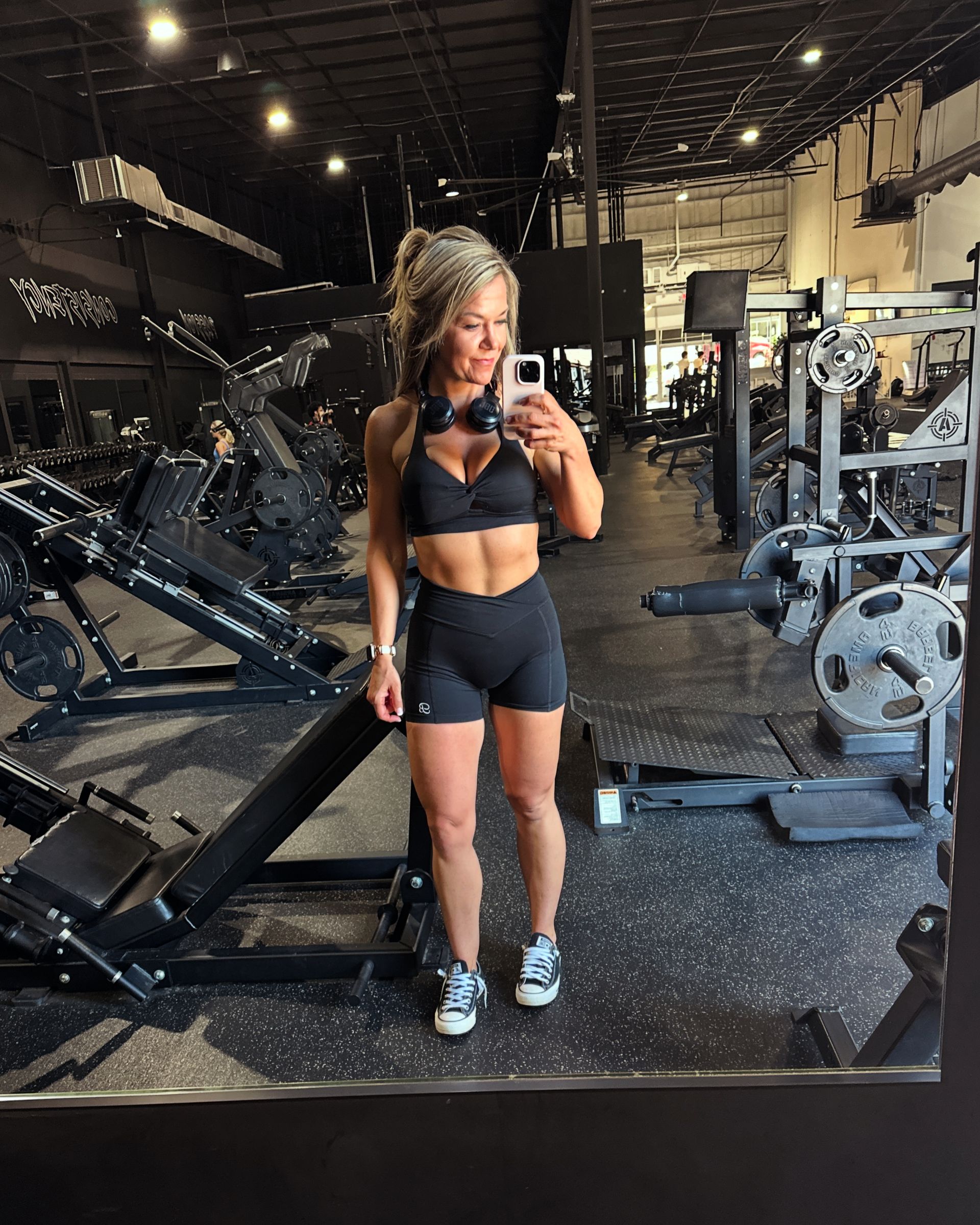
Let’s be honest—life rarely slows down. Between work, kids, errands, and surprise chaos (hello, sick days or forgotten field trips), it can feel impossible to stay consistent with your health and fitness goals. But here’s the truth: you don’t need more motivation—you need a system that works when life doesn’t. If you’re a busy woman trying to juggle it all, this one’s for you. Habit Stacking: Make Fitness Automatic One of the easiest ways to stay consistent is through habit stacking—pairing a new habit with one you already do every day. ✅ Example: After you make your morning coffee, do 10 squats or a 1-minute plank. ✅ Example: After brushing your teeth at night, stretch for 5 minutes or lay out your workout clothes. Small actions linked to existing habits = powerful results over time. ⏰ Morning Prep = Fewer Excuses Later Mornings can make or break your day. Setting up your environment the night before reduces decision fatigue and excuses. Try these: - Set out your workout clothes and shoes - Prep your water bottle + breakfast - Write down your top 3 goals for the day (fitness-related or not) When you prep the night before, you win the morning. Realistic Scheduling Wins Every Time Don’t aim for perfection. Aim for doable. You don’t need a 90-minute gym session to make progress. If your week is packed, here’s how to stay on track: - 3 strength workouts (20–30 mins each) - 2 short walks or mobility sessions - 1 stretch or journal session to reset Even 15 minutes counts. Something is always better than nothing. Download Your Free Weekly Fitness Planner Want to make this easier on yourself? I created a simple Weekly Fitness Planner just for you. ✅ Plan your workouts ✅ Track water, meals, and mindset ✅ Stay consistent even when life gets wild [ Download it here ] Final Thought You don’t have to do it perfectly. You just have to keep showing up. Your consistency—especially on the hard days—is what builds the results you’re craving. You’ve got this. And if you ever need support, the Break the Core community is here for youevery step of the way.
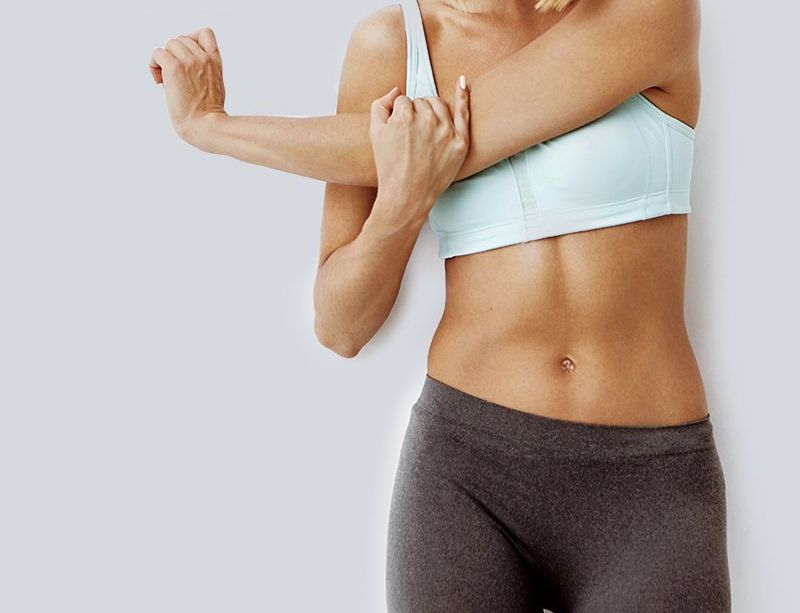
Protein is essential for every woman — whether you're trying to build muscle, lose fat, Improve energy, or support your hormones. Here's why it should be a top priority in your daily nutrition: 1. Muscle Maintenance & Fat Loss Protein helps preserve lean muscle, especially when you're in a fat loss phase. More muscle means a higher metabolism, which burns more calories at rest. Plus, protein helps you feel full longer, curbing cravings and late-night snacking. 2. Hormonal Balance Hormones are made from amino acids — the building blocks of protein. Low protein intake can negatively affect menstrual cycles, mood, and energy levels. 3. Hair, Skin, Nails & Bone Health Protein plays a key role in producing collagen (for skin), keratin (for hair and nails), and maintaining strong bones — especially important as women age. 4. Recovery & Strength After workouts, your muscles need protein to repair and rebuild. This speeds up recovery and helps you get stronger over time. 5. Appetite Control Protein is the most satiating macronutrient. Eating enough protein keeps you fuller longer and reduces the urge to overeat. How Much Protein Do You Need? Active women should aim for 0.8–1 gram of protein per pound of body weight. Example: If you weigh 150 lbs, a goal of 120–150g of protein per day is ideal.
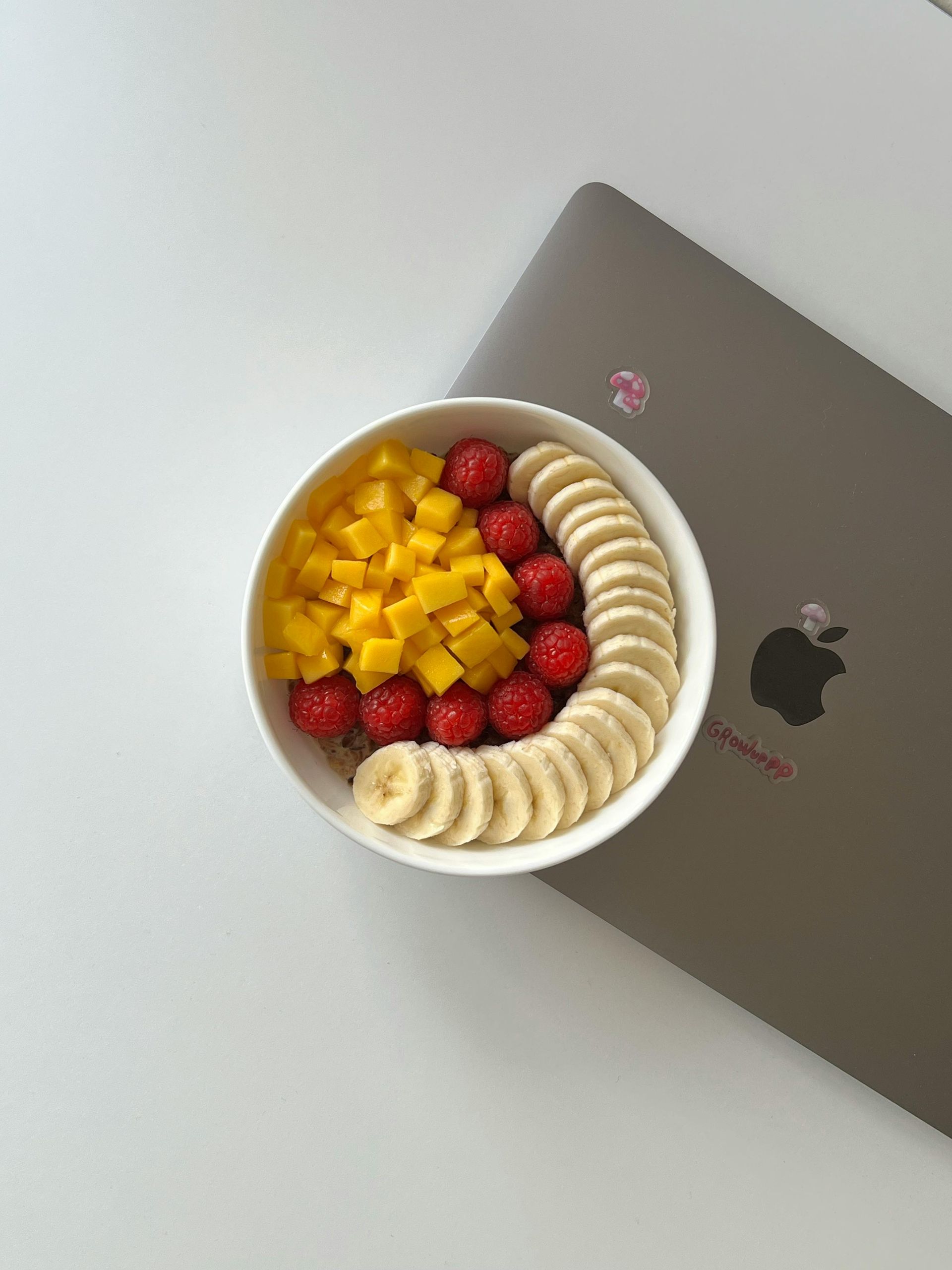
1. Focus on Whole Foods First Prioritize foods that come from the earth think fruits, veggies, lean meats, fish, eggs, nuts, seeds, and whole grains. 2. Read Ingredient Labels Aim for 5 ingredients or less. If you cant pronounce it or dont know what it is, skip it. 3. Shop the Perimeter Most fresh, whole foods are around the outside aisles of the grocery store (produce, meat, dairy). Avoid the processed-heavy center aisles. 4. Cook More at Home Even basic meals give you full control over ingredients, portions, and quality. 5. Limit Added Sugars Avoid sugary drinks, flavored yogurts, processed snacks, and sauces with hidden sugar (like ketchup and BBQ sauce). 6. Stay Hydrated with Water Ditch the soda, juice, or energy drinks. Water supports digestion, detox, and energy levels. 7. Swap Out Processed Carbs Replace white bread, pasta, and sugary cereals with oats, brown rice, quinoa, and sweet potatoes. 8. Use Healthy Fats Cook with olive oil, avocado oil, or coconut oil. Add avocados, nuts, and seeds to meals. 9. Plan & Prep Your Meals Set yourself up for success by prepping protein, veggies, and snacks ahead of time. 10. Give Yourself Grace Clean eating is a lifestyle, not a strict diet. Aim for 80/20 clean, whole foods most of the time, with room for real life.
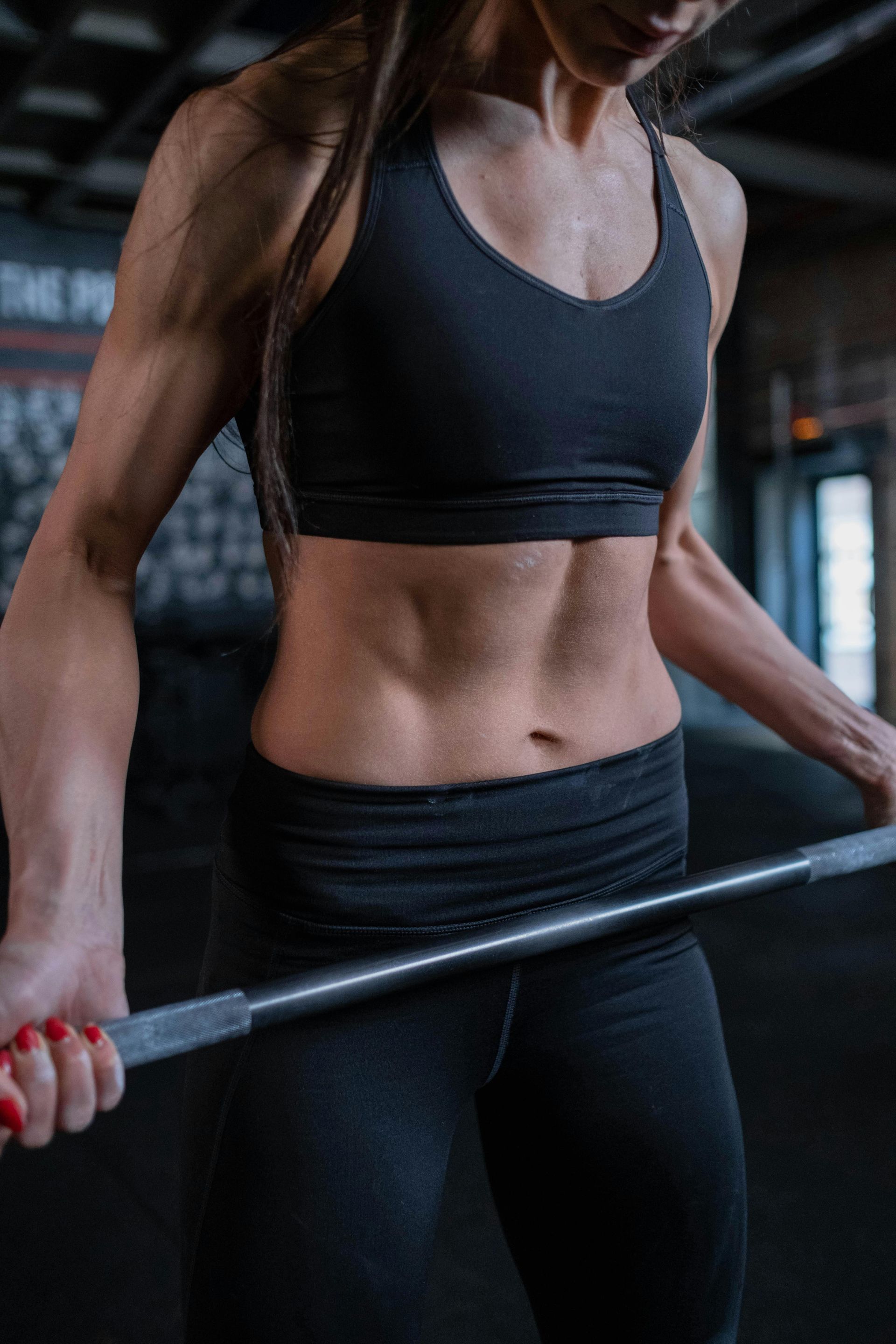
Progressive overload is a foundational principle in strength training that involves gradually increasing the demands placed on your muscles over time. This constant challenge forces your body to adapt—by getting stronger, building lean muscle, and improving endurance. Without progressive overload, your body will plateau. That’s why doing the same weight, reps, or routine week after week eventually stops producing results. Why It Matters for Women Many women worry that increasing weights will make them bulky—but that’s a myth. Due to hormonal differences (especially lower testosterone), women tend to develop lean, toned muscle, not bulk. Progressive overload is essential for: - Sculpting lean curves - Boosting metabolism - Reducing body fat - Improving confidence and strength How to Implement Progressive Overload 1. Increase Weight When an exercise feels easier or you can perform extra reps with good form, it’s time to slightly increase the weight (5–10%). 2. Increase Reps or Sets If you’re lifting the same weight, try adding 1–2 more reps per set or an additional set to increase total volume. 3. Improve Form or Range of Motion Progress isn't just about heavier weights. Slowing your tempo, going deeper into a squat, or improving mind-muscle connection enhances the challenge. 4. Add Time Under Tension Slow down your reps (especially the lowering phase) to make the muscles work harder without changing the weight. 5. Reduce Rest Periods Shorter breaks between sets increase intensity and can support muscle-building and fat-loss goals. Example Progression for a Glute Exercise - Week 1: Hip Thrust – 3 sets x 12 reps @ 65 lbs - Week 2: 3 sets x 15 reps @ 65 lbs - Week 3: 4 sets x 12 reps @ 70 lbs - Week 4: 4 sets x 15 reps @ 70 lbs (add pause at top) Tips for Staying Consistent - Track your workouts in a journal or app - Stick to a structured program (like one from Break the Core Fitness) - Focus on progress, not perfection—small changes each week lead

If you’ve ever looked in the mirror and noticed dimples or ripples on the backs of your thighs, butt, or hips—you’re not alone. In fact, up to 90% of women experience cellulite at some point in their lives. But here’s the truth: cellulite is normal. It doesn’t mean you’re unhealthy or out of shape. However, if it’s something you want to reduce, there are natural and effective ways to improve its appearance—and I’m here to guide you through it. What is Cellulite, Really? Cellulite is caused by fat deposits pushing through the connective tissue beneath the skin, creating a dimpled appearance. It’s more common in women due to differences in fat distribution, connective tissue structure, and hormones. It’s not a fat problem—it’s a skin and tissue issue. That’s why even women who are lean or athletic still notice cellulite. What Causes It to Be More Noticeable? Several factors can make cellulite more visible: - Hormonal shifts (especially estrogen) - Poor circulation or lymphatic drainage - Inflammation or fluid retention - Loss of skin elasticity - Aging and collagen decline - Lack of muscle tone The good news? These are all areas we can target through training, nutrition, and lifestyle choices. How to Reduce Cellulite Naturally 1. Build Muscle; Burn Fat Strength training is your cellulite-fighting best friend. Focusing on exercises that target your glutes, hamstrings, and thighs helps create tighter, smoother skin by building muscle under the surface. Try : - Romanian deadlifts - Hip thrusts - Bulgarian split squats - Step-ups - Cable kickbacks Pair this with cardio—like incline walking or cycling—to boost circulation and burn fat. 2. Support Your Skin From the Inside Out Your nutrition plays a major role in skin health and fat metabolism. Focus on: - High-quality protein for collagen and muscle repair - Healthy fats (omega-3s) to reduce inflammation - Antioxidants (vitamin C, berries, leafy greens) to support collagen - Hydration—your skin needs water to look firm and smooth Limit: - Processed foods - Refined sugar - Excess sodium and alcohol 3. Improve Circulation & Lymphatic Drainage Poor blood flow and toxin buildup can make cellulite worse. Try: - Dry brushing before showers - Foam rolling or fascia release - Massage therapy - Epsom salt baths for relaxation and detox 4. Focus on Recovery and Hormonal Balance Chronic stress, lack of sleep, and high cortisol levels can all contribute to fat storage and skin changes. Prioritize: - 8+ hours of quality sleep - Daily movement - Mindset work to reduce stress The Truth? It’s a Journey—Not a Quick Fix. There is no magic cream or overnight solution—but with a strategic mix of strength training, proper nutrition, and lifestyle habits, you can drastically improve the texture and appearance of your skin. Most importantly—give yourself grace. Cellulite doesn’t define your health, your beauty, or your strength. Need Help Getting Started? At Break the Core Fitness, I’ve helped hundreds of women feel stronger, leaner, and more confident in their skin. Whether you're just beginning or you're ready to level up your results, I offer: - At-home; gym-based workout guides - Monthly memberships with mindset support - 1:1 coaching with custom fitness + nutrition plans Let’s break through the myths, ditch the shame, and start working with your body—not against it. Ready to take action? Visit breakthecorefitness.com to learn more.

Consistency isn't about being perfect-it's about showing up for yourself, even when motivation is low. This guide will teach you how to build lasting habits so you can make fitness a lifestyle, not just a phase. 5 Steps to Build Consistency 1. Lower the Barrier Start small. Focus on showing up for 20 minutes. A short workout, a healthy meal, a short walk-these add up. Don't aim for perfection. Aim for progress. 2. Tie It to a Deeper Reason Find your 'why.' Fitness isn't just about the mirror. It's about energy, confidence, and showing up for the people you love. Attach your routine to a purpose that inspires you. 3. Make It Non-Negotiable Put it on your calendar. Treat workouts like appointments. If it matters to you, give it space in your day-no questions asked. 4. Track Your Progress Use a tracker, app, or journal. Celebrate the little wins. When you see momentum building, it keeps you going even when the results feel slow. 5. Expect Off Days Life happens. Don't throw away all your progress because of one off day. Get back on track. What matters most is what you do next-not what you skipped. Mastering Consistency in Fitness - Final Note Consistency is a skill you build. The more reps you put in, the easier it becomes. Show up, stay patient, and watch your progress grow.

Sleep isn't just rest-it's a critical tool for recovery, fat loss, muscle growth, and hormonal balance. Without enough quality sleep, even the best fitness plan can fail to deliver results. 4 Hormonal Reasons Sleep Impacts Fitness 1. Sleep Regulates Hunger Hormones - Leptin decreases when you're sleep-deprived, making it harder to feel full. - Ghrelin increases, making you feel hungrier and crave sugar and carbs. Result: You're more likely to overeat and feel unsatisfied, even when eating more than usual. 2. Cortisol (Stress Hormone) Increases Lack of sleep raises cortisol, your stress hormone. Elevated cortisol stores belly fat, breaks down muscle, and slows recovery. Result: Fat gain, more inflammation, and stalled progress-even with diet and exercise. 3. Growth Hormone Drops Growth hormone is released during deep sleep and is key for muscle repair and fat burning. Result: Poor sleep = slower muscle recovery and fat loss. 4. Motivation, Mood & Focus Decline Without sleep, dopamine and serotonin levels crash, leading to low energy, irritability, anxiety, and lack of drive. Result: You skip workouts, make poor food choices, and feel unmotivated. Final Thoughts Why Sleep is Essential for Health & Fitness Bottom Line: Getting 7-9 hours of quality sleep is essential for progress in your fitness journey. It supports your hormones, your recovery, your mood, and your metabolism. Prioritize sleep just like your workouts and nutrition-it's the secret weapon you didn't know you needed.


